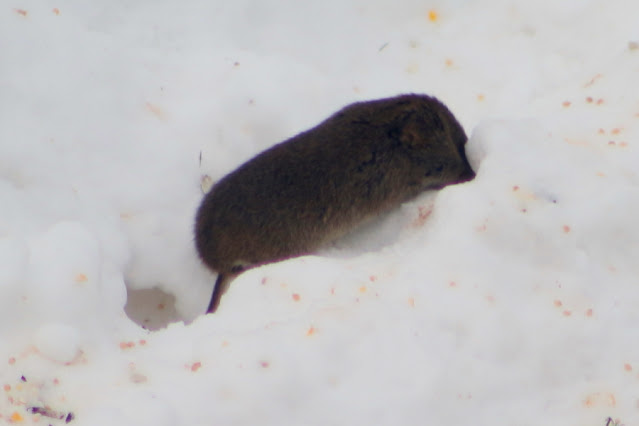This week I witnessed one of the most amazing natural phenomena I've ever seen, and it's all due to friend and outdoor enthusiast Shayne Duggan, who told me about this unique experience.
 |
| Inside the Beede Falls Ice Cave |
Just this past autumn I had stopped by Beede Falls in Sandwich Notch on my way up Mt. Israel from Sandwich Notch Road - the first time I had seen this waterfall. This is what that beautiful waterfall looked like in November.
 |
| Beede Falls after a good rain last November. |
But Shayne shared some incredible winter pictures from the falls, and I had to see it for myself. With Sandwich Notch Road closed for the winter, Linda and I hiked along the Bearcamp River Trail from Mead Base to the upper falls. Arriving at the falls there was absolutely no running water visible in the river.
 |
| The same waterfall in winter. |
But there were openings at either side of the now-frozen waterfall.
Poking my head in one of those doors opened up a whole new world hidden behind that wall of frozen water.
 |
| Looking in behind the wall of ice. |
The swirling water over the centuries has gouged out the rock where the water crashes down so the pool undercuts the bottom of the cliff that forms the face of the falls. When the pool freezes over you can crawl along the surface of the ice, passing behind the water flooding down, which over the course of the winter has frozen into a crystal ice curtain.
 |
| Behind the falls. |
 |
| Linda enters the cave, walking on the frozen pool. |
Linda took this next picture from that spot, looking along toward the other opening.
There was enough light shining through the ice that the cave was reasonably well lit on the inside.
Drops of that perfectly clear mountain water coming off the rock has formed beautiful, lustrous ice formations inside the cave.
The rush of water pouring down into the pool makes a fair racket resonating inside the cavity, though you can barely find the moving water in between the stalactites and the frozen wall. Here are a couple of videos of what it looks and sounds like from behind that wall of ice.
I imagine the ice wall builds up from the bottom as water crashing into the frozen pool freezes higher and higher until it reaches the top of the ledge, but that's just speculation.
 |
| Nature's own ice castles. (Looking back to where I came from.) |
We made the trip a loop by continuing past the falls up to Sandwich Notch Road which is closed in the winter, then followed that back to Diamond Ledge Road and returned up to Mead Base. Sandwich Notch Road is a dead-end snowmobile trail in winter; we didn't encounter a single snowmobile on a nice Friday afternoon.
It may be deep winter up in Sandwich Notch, but back at the lakes some early signs of spring are just becoming perceptible, such as the stronger sun melting snow on south facing slopes and the first tinge of yellow appearing on the goldfinches.
We're about to start that transition period of March where chick-a-dees are singing one morning, and the morning next there's a blizzard.
 |
| More snow just yesterday. |
March can be our snowiest month of the year!

















































